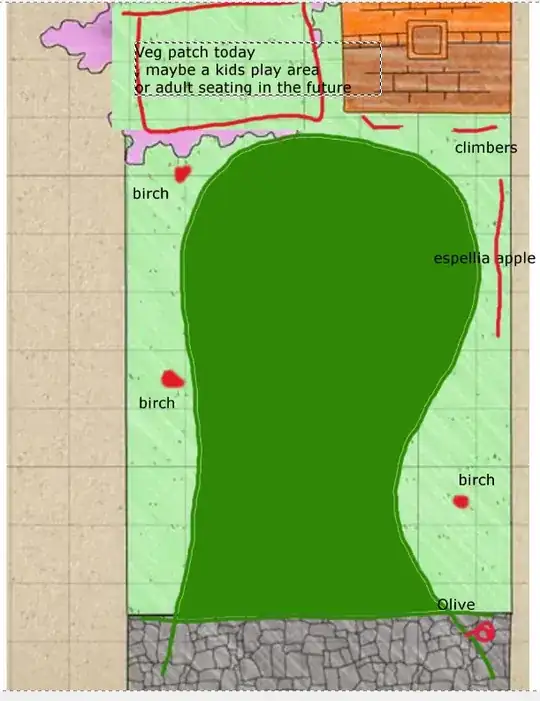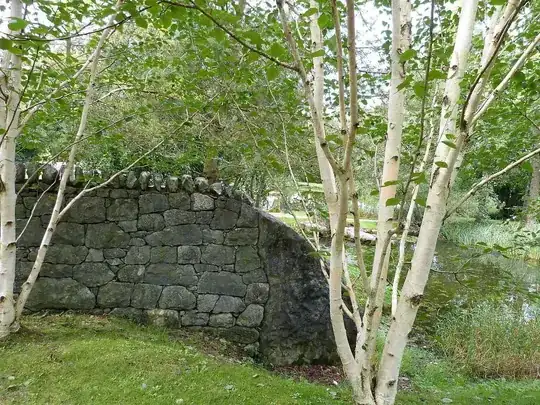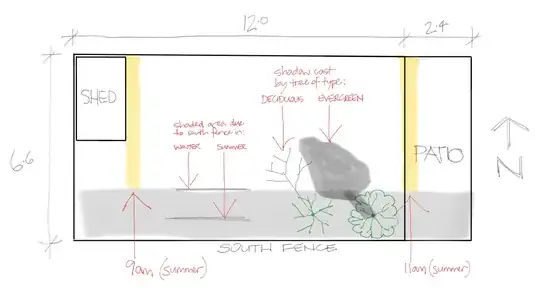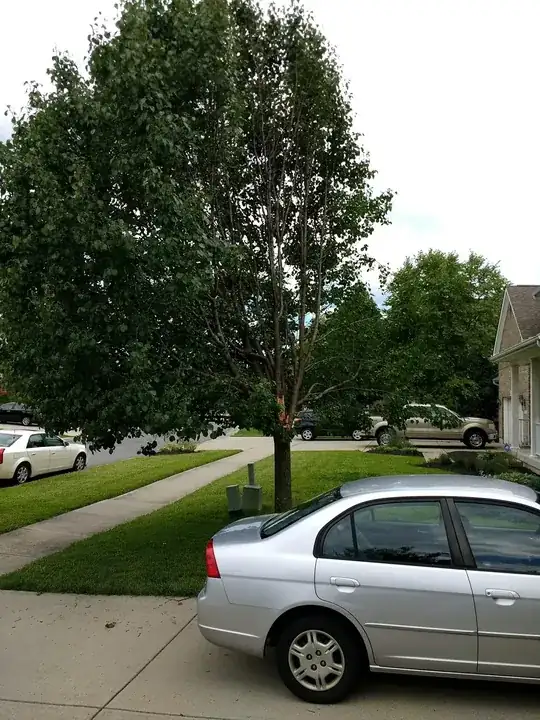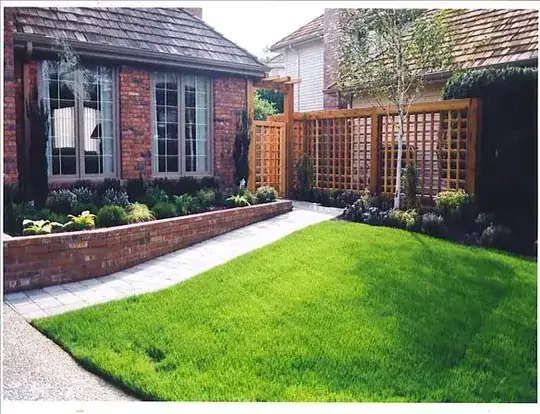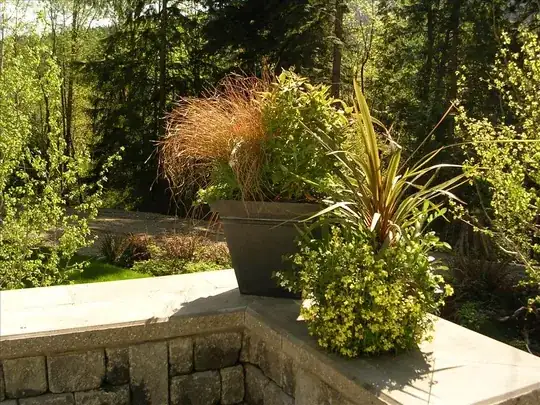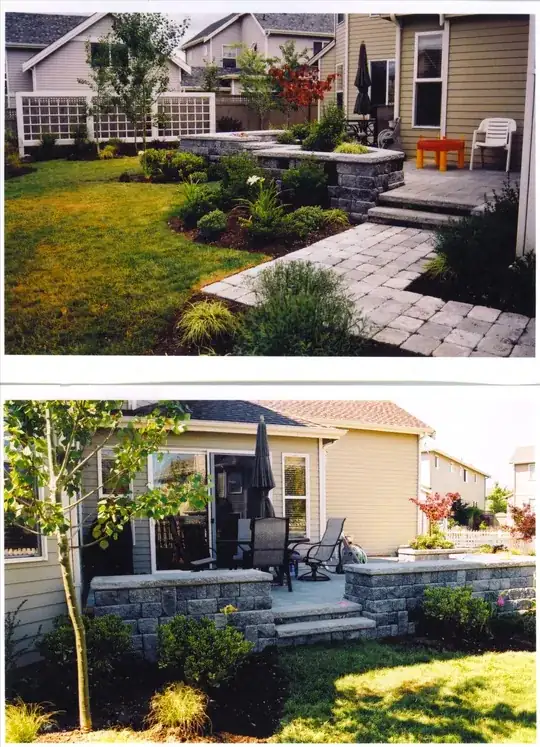Your garden is West/south-west facing, if the sun disappears to the top right of your image. West facing gardens get no sun at all before lunchtime. I'm afraid I'm going to give you some planting and design advice that you may not welcome. Because I'm old and can only visualize plants in feet, I've converted the size of your garden to feet, and its roughly 21 feet by almost 40 feet.
I had a quick look at some of the plants that might be included in your 'garden on a roll', so I'll pick a couple out as examples. It mentions Ceanothus, but doesn't say which variety - Ceanothus is an evergreen shrub, and depending on the variety, may reach a height of around 5 feet with a spread of 7-8 feet (Ceanothus thyrsiflorus repens), with others which are larger, up to the largest variety which is more of a tree, reaching around 15 feet tall with a crown or spread of about 10 feet. Deutzia has an average height and spread of 9/10 feet x 5/6 feet. Let's assume they send you the named variety I've mentioned, and a Deutzia - those two alone will take up 13 feet of your 40 foot of length, so quite how you're supposed to fit in all the other plants without having beds and borders 8 or 9 feet (2.5 metres roughly) from front to back all the way round, with a centre bed, I'm not sure. And that's without any of the trees you've mentioned.
I see there are two shrubs already present, Hydrangea macrophylla and something else I can only see a little of, maybe Elaeagnus or something similar, hard to say. Your Hydrangea will need a minimum five feet (1.6m) of space from the fence to the edge of the lawn over time, and it will take up that much space widthways as well, they're rounded shrubs - pruning of these is restricted to simply removing dead bits in spring as growth begins, or you won't get any flowers.
If you want to grow herbs and vegetables, all do better in sun, full sun if possible in the UK, which obviously presents you with a problem because the only part of your garden that gets maximum sun is in the centre, and people don't usually want to be staring at a vegetable patch rather than something ornamental. If you want to grow lots of different vegetables, then perhaps you could look at renting an allotment instead.
You need to decide whether you want vegetables, and which vegetables, then work out how much room they need and whether you want to sacrifice the middle of your garden to growing them, or keep a watch to see how many hours of sunlight the top left of the garden gets (this will vary hugely between summer and winter). If your patio gets sun, then growing things like tomatoes and potatoes in pots/bags is an option, as well as dwarf or patio fruiting trees. Herbs such as thyme, oregano, sage, and chives can all be planted in flowerbeds or borders, near the front so they get more sun. Rosemary gets to be a very large,rounded, woody shrub, about 6 x 6 feet and certainly requires full sun and free draining soil, so if you're not desperate for rosemary, don't plant one, or do, but plan on ripping it out every 2 or 3 years and planting a new, small one.
I'd also suggest you plan on less lawn - from experience I can tell you that the entrance to your shed should have paving slabs in front - grass wears out from constant use in one area. It would also be better to plan on having two or three large beds or planting areas, rather than lots of smaller ones as a border.
As for the trees you mention, Olive likes full sun - on the patio in a pot if it gets sun will work. I wouldn't recommend a bay tree in the ground - over time they get large and cast a particularly dense, dark shade, and can give a gloomy feel to small gardens. In a pot, as a standard maybe, will be fine.
As for the siting of something like a silver birch, the top left area, where you thought you might be growing vegetables, is about the best place, and I'd recommend Betula pendula 'Youngii' because it gets tall, but its pendulous branches are quite airy and don't cast heavy shade. If you have no other plans for that area (compost heap, storage, whatever) then turn it into a shade bed if it doesn't get much sun - put in the Birch a minimum of 2 feet away from the fences, plant in front with one or two shrubs (Mahonia aquifolium for instance) or one shrub and a few shade lovers like Hostas (need slug protection),Pulmonaria, Convallaria (lily of the valley), foxgloves, Astilbe if its damp enough. One caveat though - I can't see what's the other side of your fence, and if there's a building or structure very close, planting a tree there isn't a great idea. I live in London and realise its possible there are either already trees there, over the fence, or a building.
That's probably enough disappointment to be going on with, sorry...! Ask more if you want.
UPDATE:
In response to your comment - think about it this way; it looks, from your pic, judging by the size of the hydrangea, that the largest depth of any planting area is around a metre max. To get a layered planting effect, you need more depth of planting area, so anything up to 2 metres wide from the fence into the lawn - it can be curved in either side, or cut off straight, but a decent planting area of mixed shrubs, perennials and bulbs looks much better if its a minimum 1.5 m from front to back, with a length as long as you can manage. That's why I'm saying less lawn,so think about what you want to plant and how much space it will take up as well as how much lawn you actually need.
However, you could just lay the lawn as you planned, and do what everyone else ends up doing - over time,cutting away parts of it to expand the planting areas. People are afraid of too much bare soil, never realising it will soon be not only covered, but insufficient for the plants they've put in. It's important to work out the height and particularly width of any plant you choose before you plant it, and that applies to all the plants you have.
I just noticed the rest of your comment - no garden on a roll is my advice, although I suppose if you know nothing about plants, it's a sort of solution, albeit a poor one. Choose your own plants...according to size, shape, colour (of leaves), and growth habit.
As for the tree, the only other place is on the right hand fence, in centre of the fence, but it still needs to be 1.5 to 2 feet away from the fence...obvious place to create a deeper planting bed with other plants around the tree - has the advantage of blocking your view of the shed from the patio too. Amelanchier 'Obelisk' would be good there, with other planting around - not too tall, columnar growth.
I just looked at the extra image you provided - I'd still choose the Birch variety I mentioned if you really want a proper,tall tree and plant it there, 2 feet from the left hand fence. It doesn't form a crown in the same way as a cherry would, so not dense shade, it'll be dappled. Otherwise, just one or two larger shrubs - plenty of them get 12 to 15 feet tall, 25 feet in the case of Prunus laurocerasus (not that I'm recommending that, I'm not).
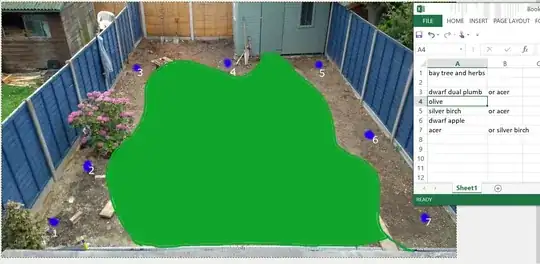 Thanks so much for your help in advance!
Thanks so much for your help in advance!
